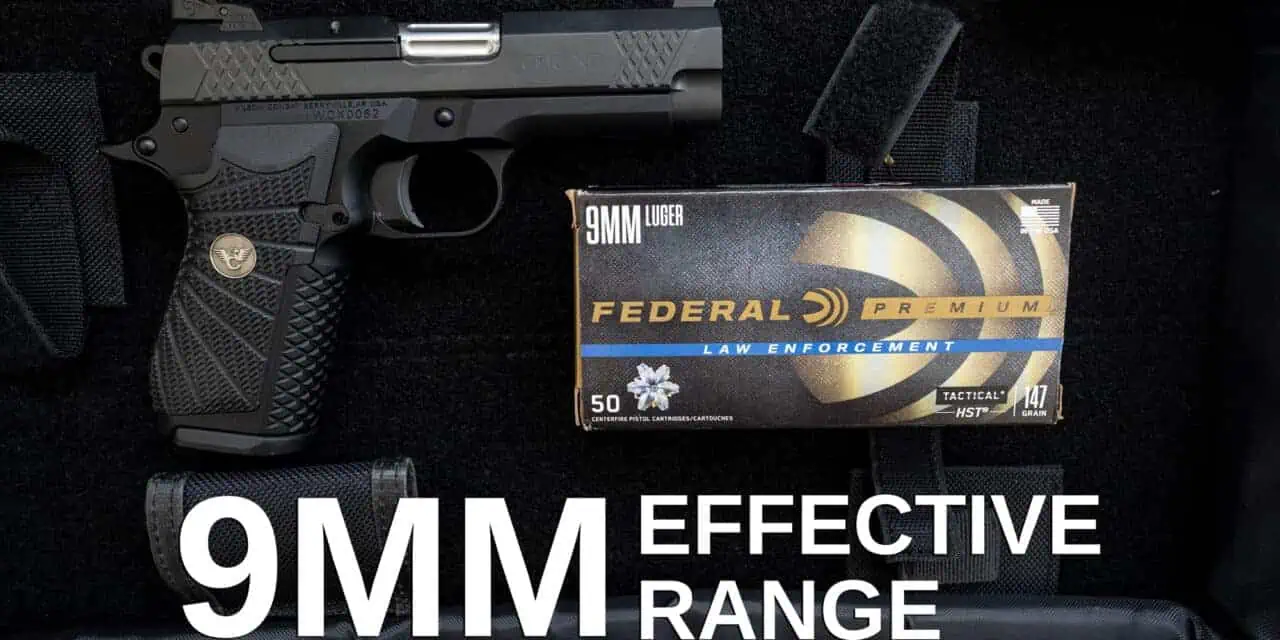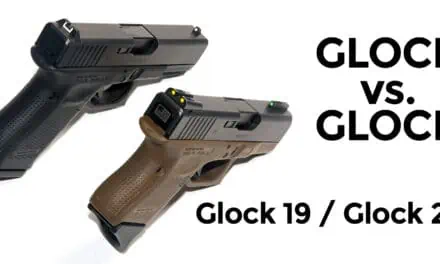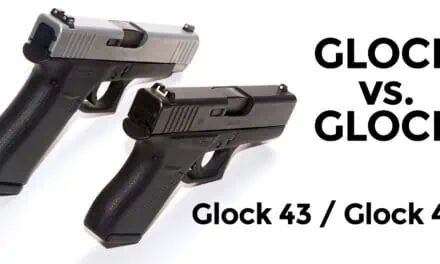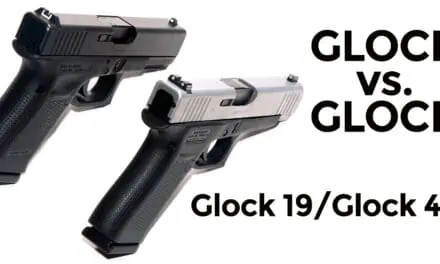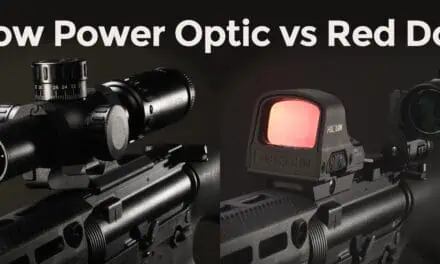You want to know the distance over which you can reliably neutralize a threat with your 9mm handgun. That’s good information to have – not necessarily because you intend to defend your life against an attacker who is positioned dozens of yards away from you, but because you want to know exactly what kind of performance you can count on while your life is on the line.
Let’s put it another way: You want to know effective range of 9mm ammo. But just to be certain, that’s not the same thing as the farthest distance a 9mm bullet is able to travel!
How Far Can a 9mm Bullet Travel?
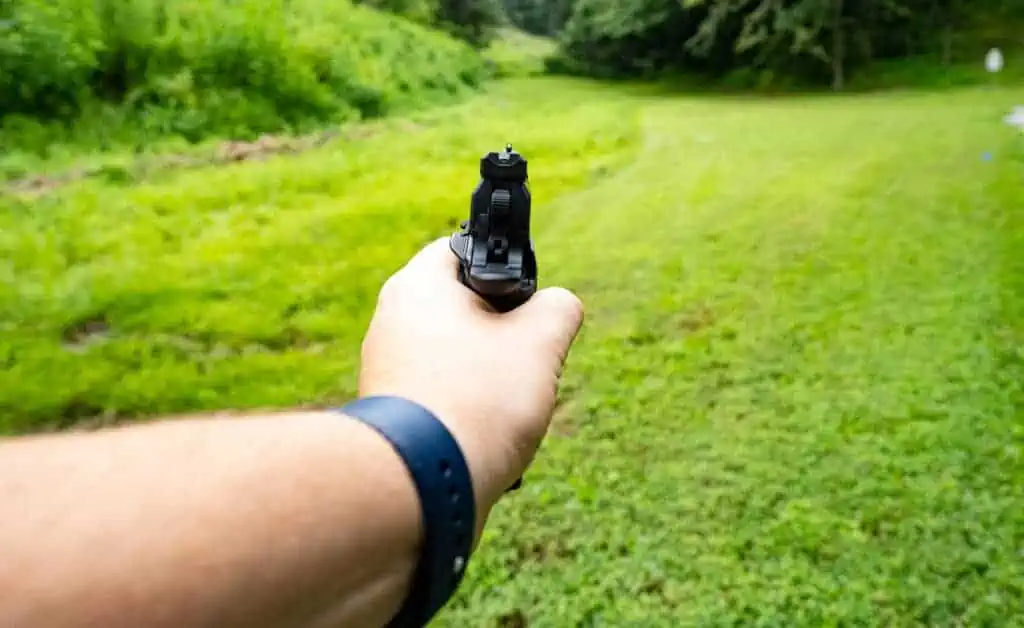
A 9mm bullet can potentially cover up to three miles. At that range the bullet will not retain remotely sufficient kinetic energy to reliably incapacitate a human-size threat. And while a 9mm bullet may travel three miles under optimal conditions, whatever it actually hits at that distance is totally up to chance.
The longest confirmed sniper kill in history was 2.199 miles. That feat was pulled off by a Canadian Joint Task Force 2 sniper while he was firing a 50 BMG McMillan Tac-50. In contrast, legendary marksman Jerry Miculek can hit a 1,000-yard target with a 9mm revolver.
Don’t take this the wrong way: You’re no Jerry Miculek. If you can consistently hit a 100-yard target with your 9mm handgun, then that is downright respectable. Fortunately, civilian-involved defensive shootings typically occur at ranges between three and five yards. So, unless you’re wearing oven mitts you’ll most likely be able to hit the threat.
What Is 9mm Effective Range?
According to the U.S. Department of Defense, “maximum effective range” means “the maximum distance at which a weapon may be expected to be accurate and achieve the desired effect.”
It is crucial to note that the “desired effect” changes depending on the circumstances. The U.S. Army’s goal isn’t necessarily to kill enemy combatants. They just want them no longer capable of conducting warfare. The difference between a dead enemy soldier and one who is confined to an infirmary is functionally identical. As a matter of fact, from a tactical standpoint it is better if the enemy soldier is merely injured. That way the enemy government has to expend more of its limited resources on gauze and antibiotics instead of just planting the poor devil in the ground and moving on with it.
This is part of the reason why our Army considers 60 ft lbs of kinetic energy on impact sufficient to achieve their desired effect. But your desired effect during a self-defense scenario is quite different. You want to make absolutely certain your assailant is no longer capable of continuing their assault against you. That’s why considerably greater kinetic energy on impact is recommended for civilian self-defense shootings: 220 to 300 ft lbs.
For simplicity’s sake, let’s assume the average between those two numbers is an acceptable threshold for personal protection. That begs the $10,000 question: At which range can the 9mm reliably transfer 260 ft lbs of energy to its target?
Your Ammo Choice Matters
Not all 9mm cartridges are equal. The range at which a round can transfer at least 260 ft lbs of energy depends on many factors. These things include bullet weight, muzzle velocity, potential for terminal expansion and ballistic coefficient (a measure of a bullet’s ability to overcome air resistance in flight, where a higher number is better).
The firearm’s barrel length will also significantly affect a cartridge’s muzzle velocity, as a longer barrel gives propellant gasses more time to exert their energy against the projectile. While it’s not necessarily always the case, a longer barrel equals a higher muzzle velocity, which in turn means greater energy on impact.
With all of that taken into account, we went ahead and calculated the ranges at which several manufacturers’ 9mm self-defense cartridges will transfer at least 260 ft lbs of energy to their targets. It seems safe to say this is your guide to 9mm effective range distances.
| Cartridge | Barrel Length (in) | Bullet Weight (gr) | Muzzle Velocity (fps) | G1 Coefficient | Max distance with > 260 ft lbs of energy (yds) |
|---|---|---|---|---|---|
| 9mm Prvi Partizan 124gr JHP | 4 | 124 | 1132 | 0.080 | 51 |
| 9mm Hornady BLACK 115gr XTP | 4 | 115 | 1155 | 0.131 | 67 |
| 9mm Prvi Partizan 115gr JHP | 4 | 115 | 1181 | 0.121 | 70 |
| 9mm Remington UMC 115gr JHP | 4 | 115 | 1145 | 0.160 | 78 |
| 9mm Remington HTP 115gr JHP | 4 | 115 | 1145 | 0.160 | 78 |
| 9mm Speer Gold Dot 115gr JHP | 4 | 115 | 1210 | 0.129 | 84 |
| 9mm +P Remington Golden Saber Bonded 124gr JHP | 4 | 124 | 1125 | 0.153 | 95 |
| 9mm Speer Gold Dot 147gr JHP | 4 | 147 | 985 | 0.168 | 96 |
| 9mm Hornady BLACK 124gr XTP | 4 | 124 | 1110 | 0.167 | 96 |
| 9mm Speer Gold Dot 124gr JHP | 4 | 124 | 1150 | 0.145 | 100 |
| 9mm Federal HST 124gr JHP | 4 | 124 | 1150 | 0.154 | 106 |
| 9mm Remington HTP 147gr JHP | 4 | 147 | 990 | 0.186 | 111 |
| 9mm Hornady Custom 147gr XTP | 4 | 147 | 975 | 0.216 | 112 |
| 9mm Prvi Partizan 147gr JHP | 4 | 147 | 1017 | 0.164 | 119 |
| 9mm +P Federal HST 124gr JHP | 4 | 124 | 1200 | 0.154 | 126 |
| 9mm +P Hornady American Gunner 124gr XTP | 4 | 124 | 1175 | 0.170 | 128 |
| 9mm Federal HST 147gr JHP | 4 | 147 | 1000 | 0.206 | 133 |
As you can see, your ammo selection will have a marked impact on your 9mm handgun’s effective range. You will experience gentler felt recoil if you select a round with a lighter bullet and lower muzzle velocity. As a result, effective range will suffer. On the other hand, a heavier bullet and/or higher muzzle velocity will extend your effective range at the expense of heavier recoil.
No matter your ammo selection, you can rely on your 9mm handgun to deliver sufficient energy for personal protection at all ranges within 50 yards. We think the testing we conducted below proves this. It is highly unlikely that you’ll ever perceive someone else as an immediate threat to your personal safety if they’re standing over half a football field’s length away from you.
In other words, you can depend on the 9mm to neutralize virtually any threat you could encounter as a civilian. Naturally you’ll have to meet your 9mm handgun halfway and actually hit the threat. We’d suggest you target a vital organ, while you’re at it. Of course, no amount of online reading can ever substitute for target practice.
9mm Gel Testing at Various Distances
We set out to see the impact of lower kinetic energy as you pull 9mm farther from its target. For our tests, we started at 10 yards and worked out incrementally to 75 yards.
We used a Wilson Combat EDC-X9 9mm 1911 pistol with a 4-inch barrel. For ammo, we used Federal’s 147 grain HST self-defense ammo.
At each distance we used a four layer cloth barrier and Clear Ballistics synthetic 10% ordnance gel.
10 Yard Gel Impact
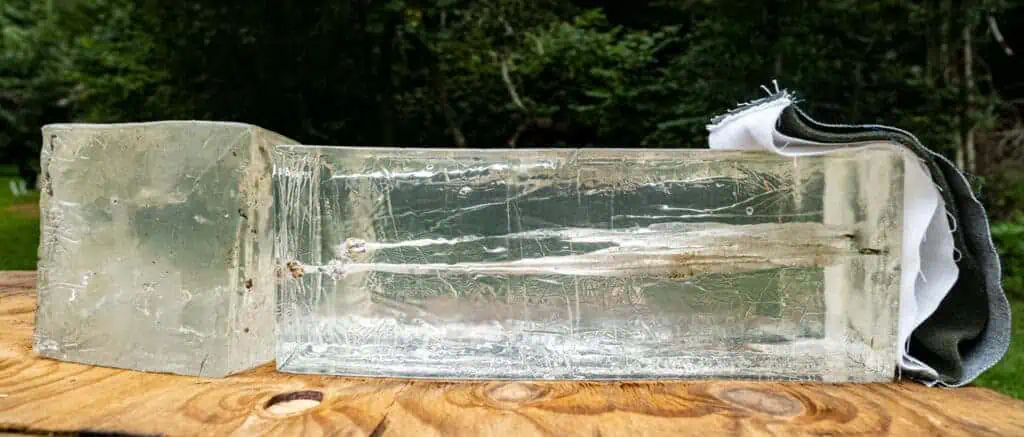
At 10 yards, penetration into the gelatin was nearly the entire length of the 16-inch block. A few of our rounds exited the block through the top or side.
You can see from the image above where the expanded bullets came to rest inside the block. We’ll allow these three rounds to serve as our control of sorts to see how distance impacts penetration and, potentially, expansion.
9×19 at 25 Yards
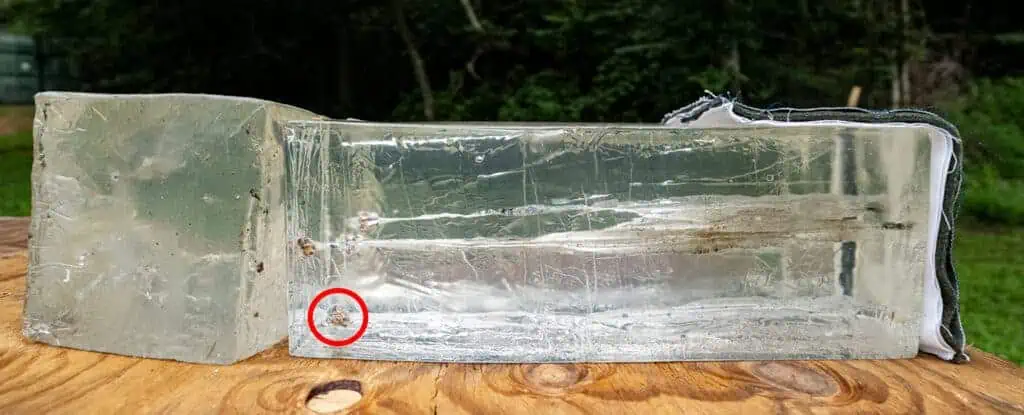
At 25-yards, you can see really no difference in penetration or expansion of the round.
Testing at 50 Yards
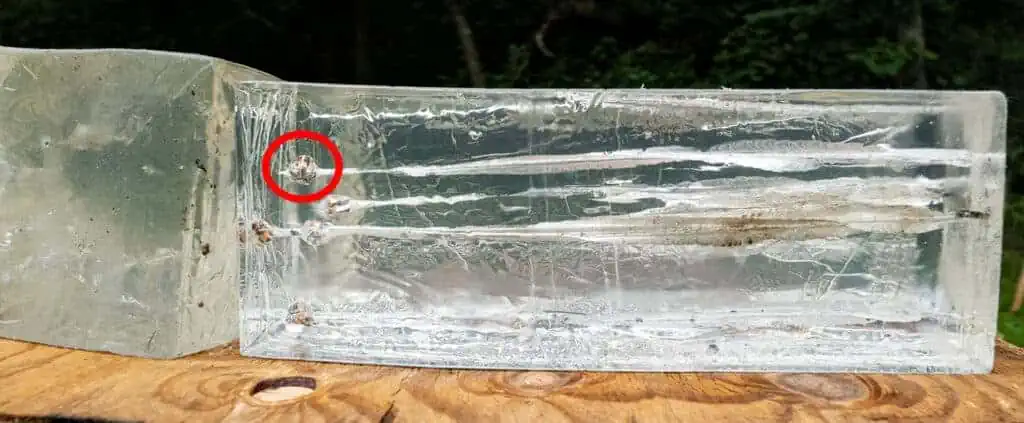
50 yards doesn’t give us any change in performance into the synthetic gelatin either. We’re still well-within the FBI’s recommendation for both penetration and expansion.
Testing at 75 Yards
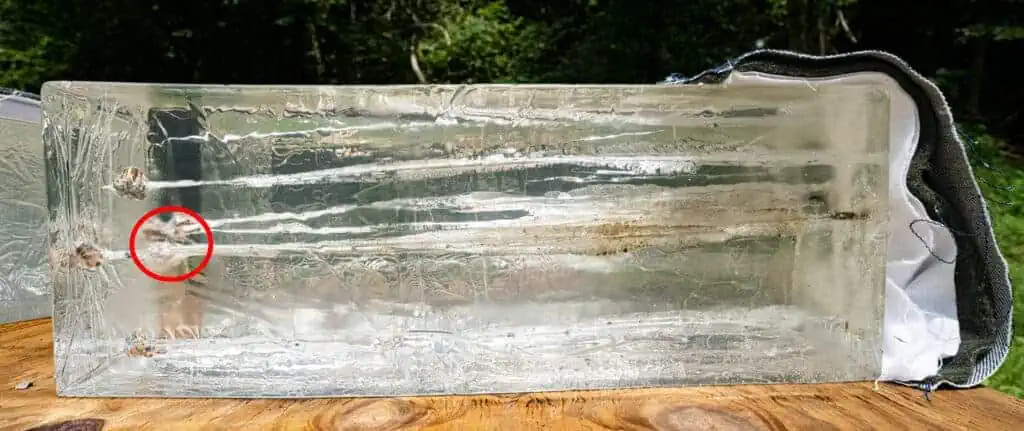
At 75-yards, we start to stretch the limits of our marksmanship. Hitting the 8″ square block proved a challenge. When we did finally score a hit, the results weren’t very enlightening either. If you trust gel tests, there’s no evidence in our field testing to think the 9mm isn’t capable of neutralizing a threat at 75 yards. The bigger question we encountered centered more on the legality and morality of firing a 9mm pistol at an attacker 75 yards away. At what point would you be better served to escape the threat than engage with it?

